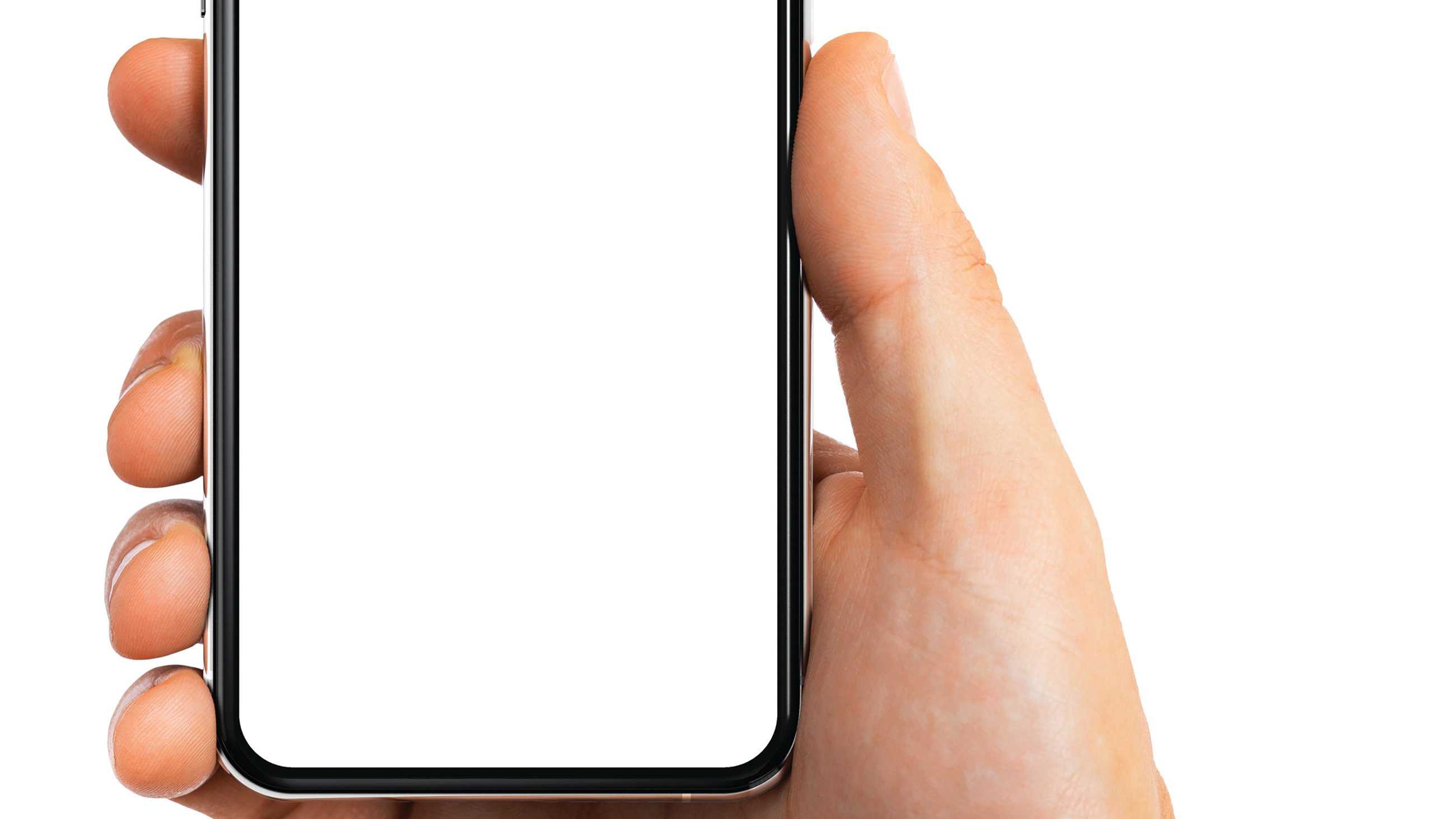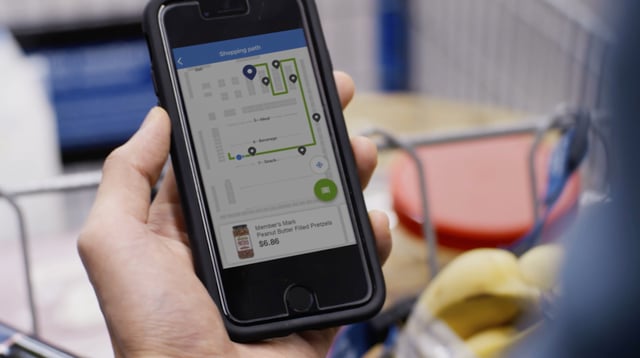The Strength of the Smartphone for Empowering Customers
Mobile phones have evolved tremendously over the years, becoming a ubiquitous part of daily life. The number of shoppers who walk into your store with a smartphone far outweighs the number of those without one.
Key Takeaways
- Apps can allow consumers to find items in the store, or check out groceries without having to wait or receive a paper receipt.
- Mobile technology can improve the customer experience and let shoppers make their own choices, as well as empower store and warehouse associates through enhanced operational efficiency.
- Sam’s Club and other retailers are now testing augmented reality for both fun and function.
With this in mind, mobile phones can be one of a grocer’s greatest tools to improve the customer experience and empower shoppers to make their own choices with a high level of confidence. The pocket devices can also help remove much of the friction in the shopping experience.
From faster checkouts to augmented reality, many retailers have started embracing customer-facing smartphone technologies that combine the physical in-store experience with the advantages that an ecommerce experience offers. Some of these advancements were on display — and definitely a topic of conversation — at Groceryshop, which took place Sept. 15-18 in Las Vegas.
“I think about our customer, our shopper, and we know things about her. She has less time than before; she wants convenience,” notes Sepideh Burkett, VP, store support, at Carlisle, Pa.-based Giant Food Stores. “And we know she has a cellphone. She wants full integration.”
Answering an Age-Old Question
One shopper question can never escape employees: Where do I find this? Customers have likely been wandering around the store in search of an item long before they stop an employee, and now the employee stops what they’re doing to assist. It’s a frustrating process all around.
Schnuck Markets has introduced robots from San Francisco-based Simbe Robotics, named Tally, into its stores. These robots help check inventory and manage stock, but they can also improve the grocer’s mobile experience for customers. David Steck, VP of IT infrastructure and application development at St. Louis-based Schnucks, and his team can use the data from Tally in an app.
“If you’re building your shopping list, we have the ability to tell the customer exactly where an item is,” Steck says. “If you’re in the store and you can’t find the item, you can search for it, and we will give you the aisle, side and shelf segment number.”
As customers create their shopping lists, the app also sequences the items by location to create the easiest and smoothest shopping experience when they enter the store.
Schnucks employees can also use the app. For them, it provides the shelf number in addition to the other directionals, so they can take the customer directly to an item.
Steck cautions against taking store mapping to the next level of indoor GPS capabilities, although he doesn’t rule it out completely.
“I’ve looked at that for a couple years, and to what result do you get? Do you really want your customers walking through the store staring at their phone and seeing their blue dot move and navigate through the store?” Steck asks. “If you look at it from an analytics capability, then I say it’s probably worth pursuing, but I wouldn’t be upfront to the customer about it. I would collect that passively in the background.”
Improving the Checkout
One of the largest pain points in any retail experience is the line. Customers have done their shopping and are ready to check out, but they have to wait. There are a lot of potential options surfacing, from Amazon Go-style just-walk-out technology to smart carts, but one solution already being implemented at grocers uses customers’ smartphones.
Sam’s Club has a tech hub in Dallas, referred to as Sam’s Club Now, where the company’s Scan & Go technology was tested before being implemented nationwide. Customers use their mobile phones to scan the barcode on products while placing them in their carts, and a receipt is tallied as they shop.
“It’s a very digital experience,” says Jamie Iannone, CEO of SamsClub.com and EVP of membership and technology at Sam’s Club, a division of Bentonville, Ark.-based Walmart Inc. “We originally built it as a stand-alone application so we could build it fast and learn, but now we’ve integrated it into the core experience.”
On Sam’s Club’s app, customers can have their digital membership card, use Scan & Go, and get scanned out as they leave the club. There’s no need for paper, since the process is fully digital. Sam’s Club also integrated the solution of the age-old question of where to find an item into the experience.

Other grocers are also embracing similar technologies, such as Grand Rapids, Mich.-based Meijer with its Shop & Scan solutions, and Giant Food Stores with Scan IT. Giant Food Stores, however, has taken a slightly different approach from that of Sam’s Club.
“We offer handheld devices that our shopper can grab, and, as they go, they can scan their items,” Burkett says. “But they can also do that with their own mobile device.”
Shoppers can then pay with their mobile wallet for a completely frictionless experience, or with another form of payment.
These mobile scan technologies are still evolving. Sam’s Club recently solved the issue of purchasing alcohol in accordance with individual state requirements, and is rolling out that solution now.
According to Iannone, the club retailer is also working on an item recognition tool, so customers don’t have to scan the item.
“It’s using AI and machine learning to figure out what’s in your cart,” he says. “It’s pretty easy to tell paper towels from soda, but it’s actually pretty hard to tell lettuce from spinach, and [our engineers] have figured that out.”
Augmenting Reality
The team at Groceryshop compiled “75 Ways Retail Will Change in the Next Decade,” and this next way of using customers’ smartphones made the list: “Augmented- and mixed-reality technologies will be used primarily for fun/experiential in-store applications, but also for navigation, promotions and product information.”
Sam’s Club, among other retailers, is currently testing augmented reality for both fun and function.
At Sam’s Club Now, shoppers with children can make the experience more engaging by using augmented reality in the app to turn the shopping cart into a pirate ship.
Zurich, Switzerland-based technology company Scandit uses computer vision and machine learning to enhance mobile shopping apps.
“We can overlay the physical world with a virtual layer of information that makes me as a consumer more empowered to make the right decision at the right time,” says Samuel Mueller, co-founder and CEO of Scandit.
Customers can use the quick-scanning technology to find out whatever information is provided by the retailer, online databases, and more. Wine ratings appear when a specific bottle comes into focus, foods are given a green or red color depending on whether a certain allergen — noted by the customer — appears in them, special savings pop up over the shelf tag, and more.
Scandit also provides self-scanning and self-checkout technologies, ID verification, and rewards programs, to name just a few of its offerings.
One key component of all of these mobile apps is the data collected and the ability for retailers to use this data to provide a more personalized experience for shoppers. From tailored recommendations and rewards, to an acknowledgement of how long they’ve been loyal to your store, customers enjoy feeling like they matter.
“Based on the membership model [of Sam’s Club], we have 100% perfect information about everything we’ve done online or in the club, and not only that, but they know that we have perfect information,” Iannone says. “That gives us the freedom to do some really magical things for our customers.”
Operational efficiency both in the front of the store, as well as in the warehouse, is one aspect of all of these mobile technologies that can’t be overlooked. In addition to empowering customers, these technologies can empower employees.
“We channel these technologies to either elevate customer experience — so make the process much more engaging, simpler and more empowered — or to improve operational efficiency,” Scandit’s Mueller says.
Grocers are using many of these same technologies in tandem with other consumer-grade tools to help store employees do their jobs better, and with that, the possibilities of smartphones at retail continue to progress.








